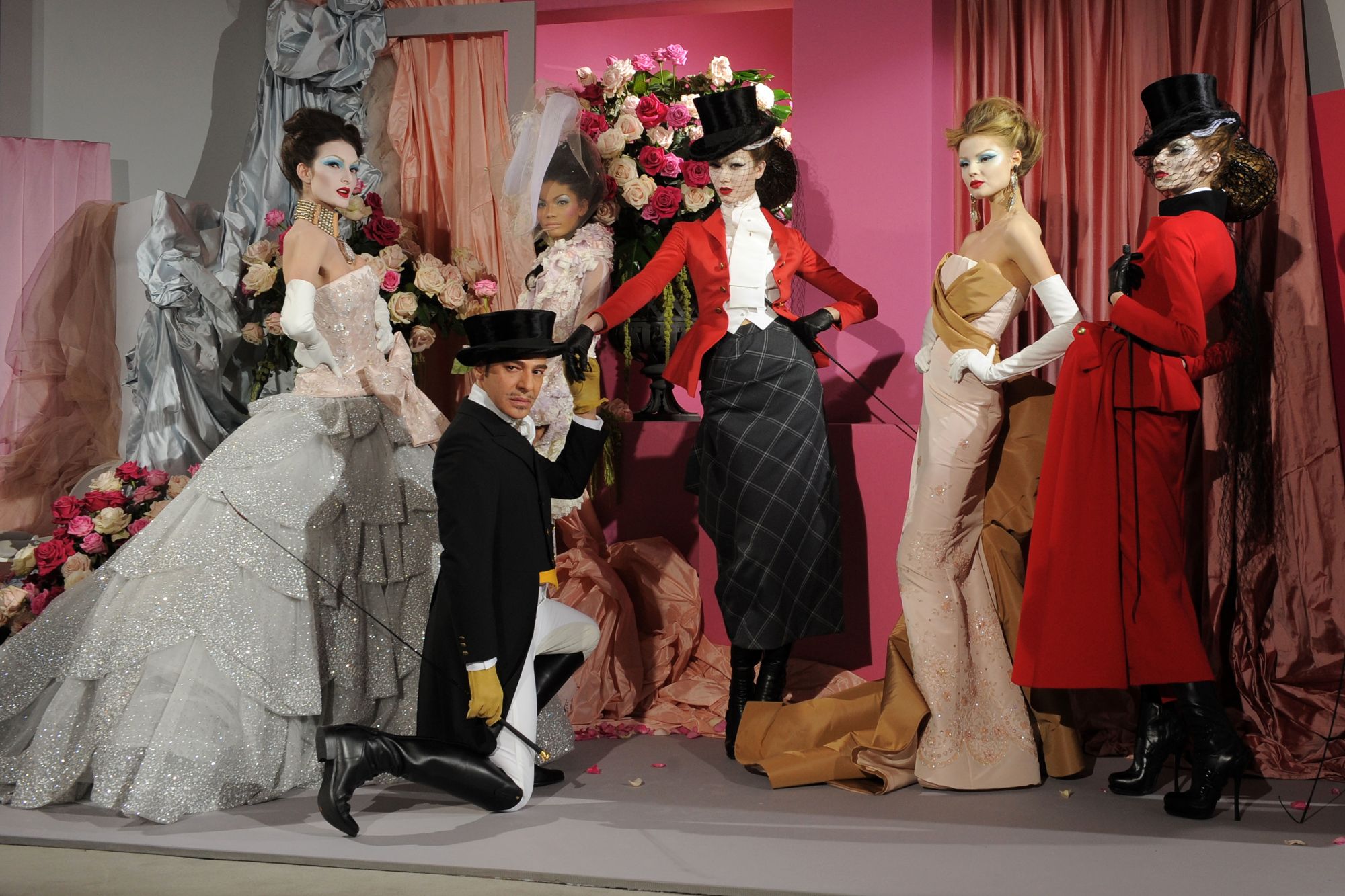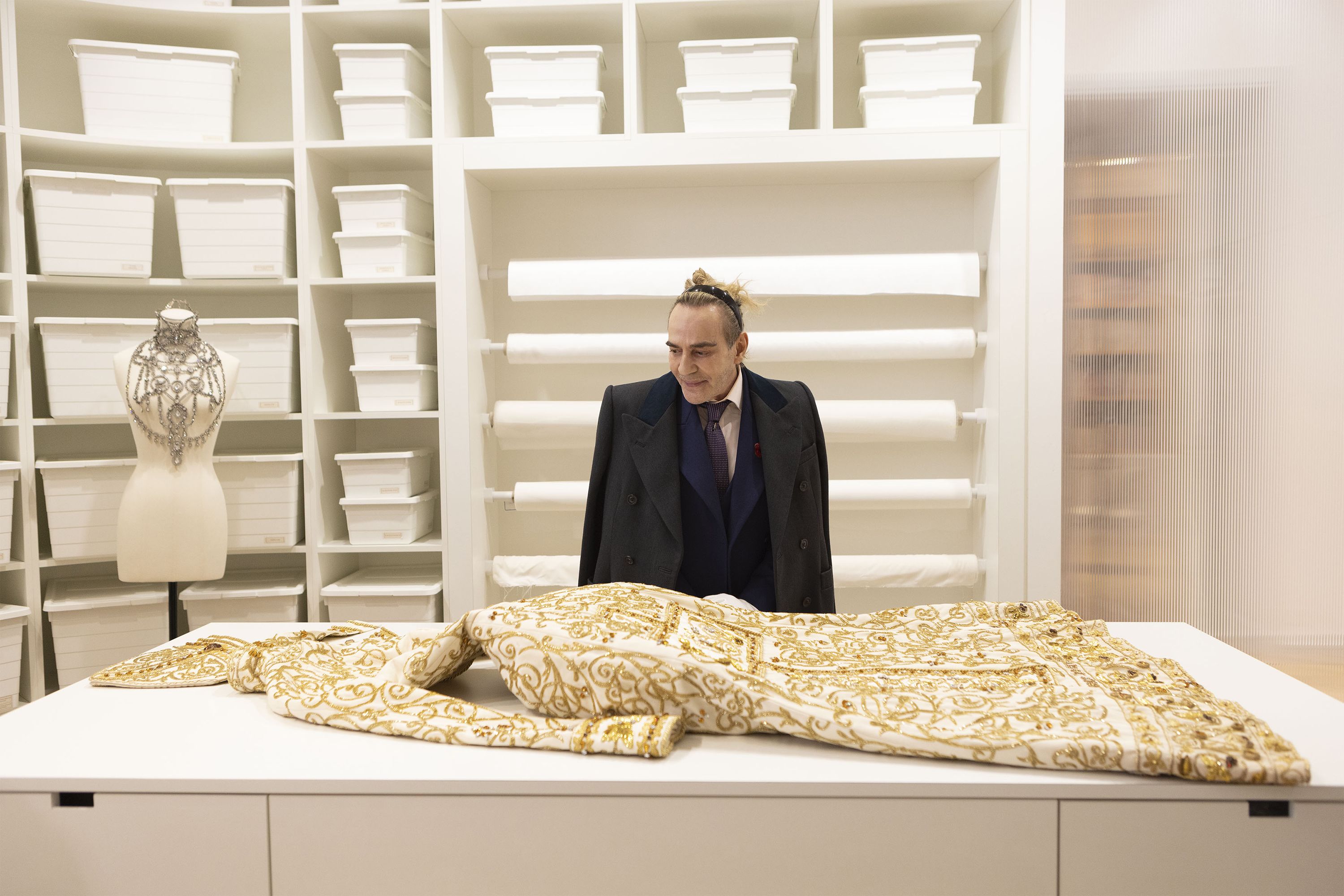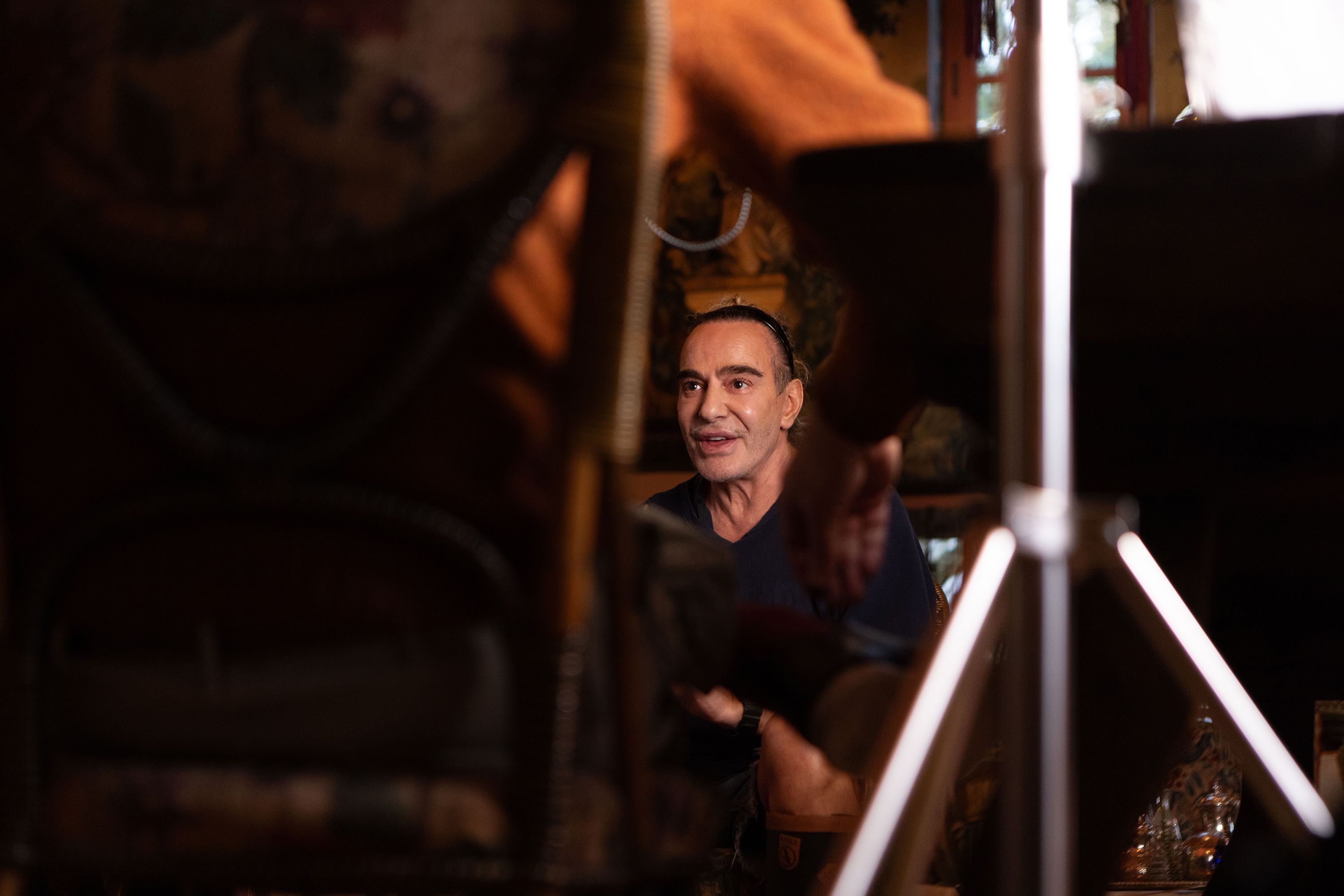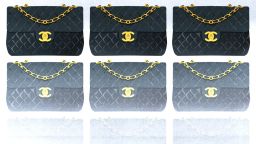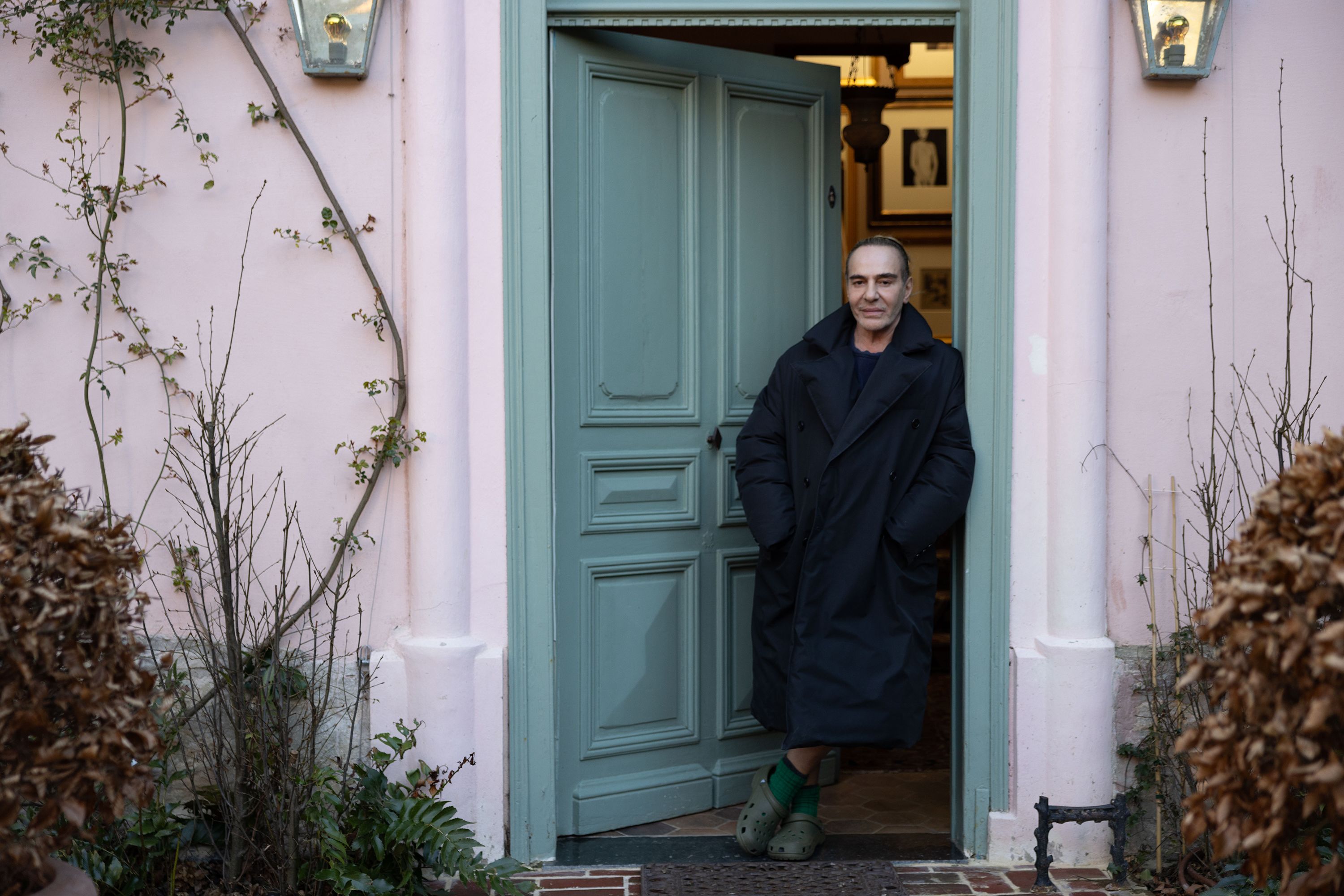After a first intervention for the fashion house’s seismic creative director John Galliano failed, Dior’s then-CEO Sidney Toledano staged a second, more serious one. It was February 2011, shortly before Galliano was set to debut what would become his final collection for Dior at Paris Fashion Week, and the designer was summoned to appear before Bernard Arnault, the chairman and CEO of LVMH, Dior’s parent company.
In their conversation, Arnault stressed that if Galliano did not stop binge drinking, he would die. In response, as Toledano recounts in the new documentary “High & Low: John Galliano,” the then-50-year-old gym-obsessive ripped open his shirt to reveal a rippling torso and said, “Does this look like the body of an alcoholic?”
And so the designer’s drinking and pill-popping rolled on. But just days before the Paris Fashion Week show, Galliano was accused of making antisemitic comments at fashionable watering hole La Perle, in the French capital’s Jewish quarter. Video of a second, separate incident at the bar — filmed a few months earlier — then surfaced in British tabloid “The Sun.” It showed a visibly inebriated Galliano verbally accosting patrons, spewing antisemitic insults and saying, to nobody in particular, “I love Hitler.”
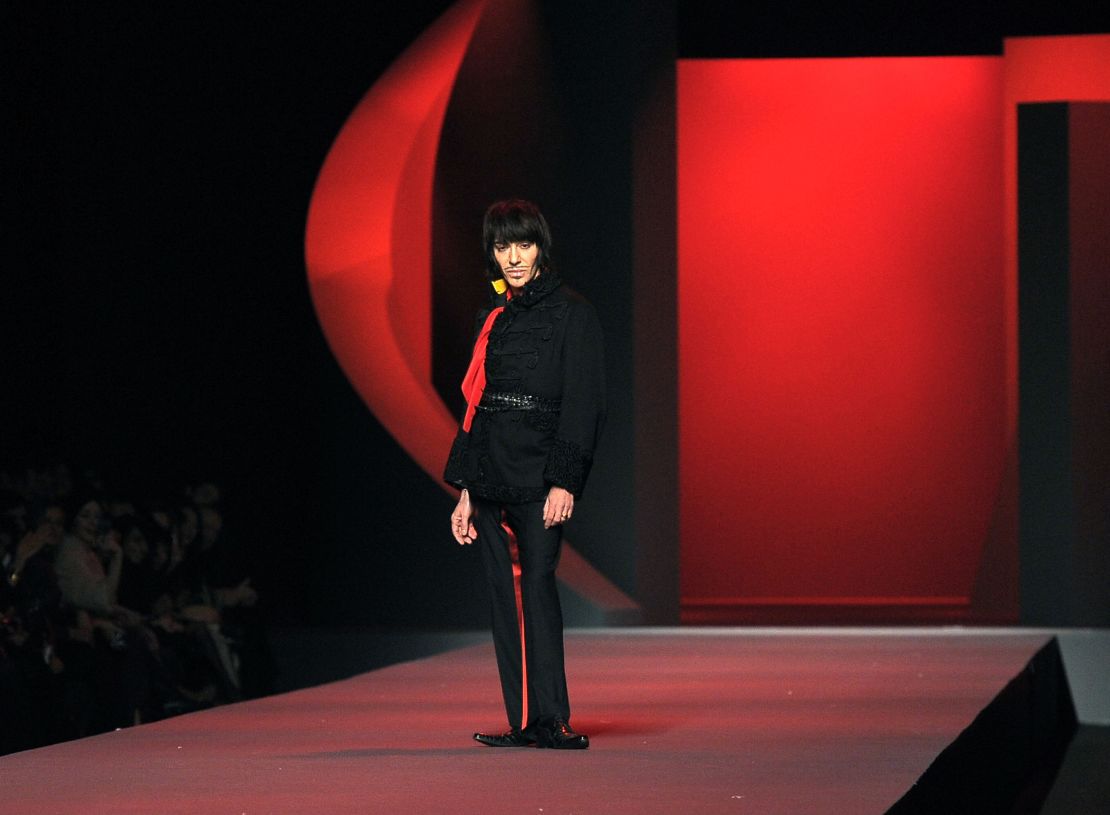
Galliano was swiftly fired by Dior and disgraced in the global press. (His final collection was shown without him.) He was found guilty in court of two counts of antisemitic behavior; after paying a 6,000 euro (then $8,415) fine, he decamped to a remote location to find solace. For years, he remained largely out of the spotlight.
But in the annals of contemporary “cancel culture,” Galliano’s downfall — though it predated the phenomenon by some years — is an entry that perhaps warrants closer inspection. At least, “High & Low” director Kevin Macdonald, whose documentary performs a thrilling autopsy of Galliano’s career collapse, thinks so.
“During lockdown, I’d been reading (about) everybody being canceled, one after another. And it set me to thinking about forgiveness and when and how people are forgiven,” Macdonald told CNN. “Somebody mentioned to me, ‘What about Galliano?’”
A friend introduced him to Galliano, and once he saw the designer’s desire to tell his side of the story, Macdonald approached Anna Wintour — Galliano’s “protector,” the Scottish filmmaker said — for her blessing. (Wintour even agreed to appear in the documentary herself.)
“One of the things I’ve (encountered), particularly in the US, is people who were like, ‘I don’t want to see a film about an anti-Semite,’” Macdonald said. “I’m like, ‘Well, I don’t know if he is. Maybe he’s not. But shouldn’t we try and understand him and shouldn’t we try and see where that came from?’
“I’m not put off by moral ambiguity and complex characters. And that was the thing that made me interested in John — there aren’t easy answers.”
Unraveling threads
As its title suggests, “High & Low” scrutinizes the designer’s extraordinary rise and dramatic flameout. Seemingly addicted to ambition and paid to conjure, in clothes, exotic dreams and transportive visions, Galliano appears to have been peeled away from reality like a shell from a boiled egg. At his creative height, he was producing more than 30 collections a year across both Dior and his namesake label. His assistants had assistants. He did not personally know how to use an ATM. “After every collection, he would crash. He would totally crash,” Johann Brun, an early financial backer of the Galliano label, says in the film.
“On the surface, John was told, ‘Do you want to take over the advertising of the perfume? Do you want to take over the watches?’” Macdonald said. “John, being an obsessive control freak, would be like, ‘Yes, yes, yes.’”
“I was committing suicide slowly,” Galliano admits at one point in the documentary. “I just wanted to sleep forever.”
In one standout scene, Galliano recounts his father’s passing, three days before a Dior Haute Couture show. Toledano proffered a jet to fly Galliano to the burial — and return that same evening, so he could resume fittings.
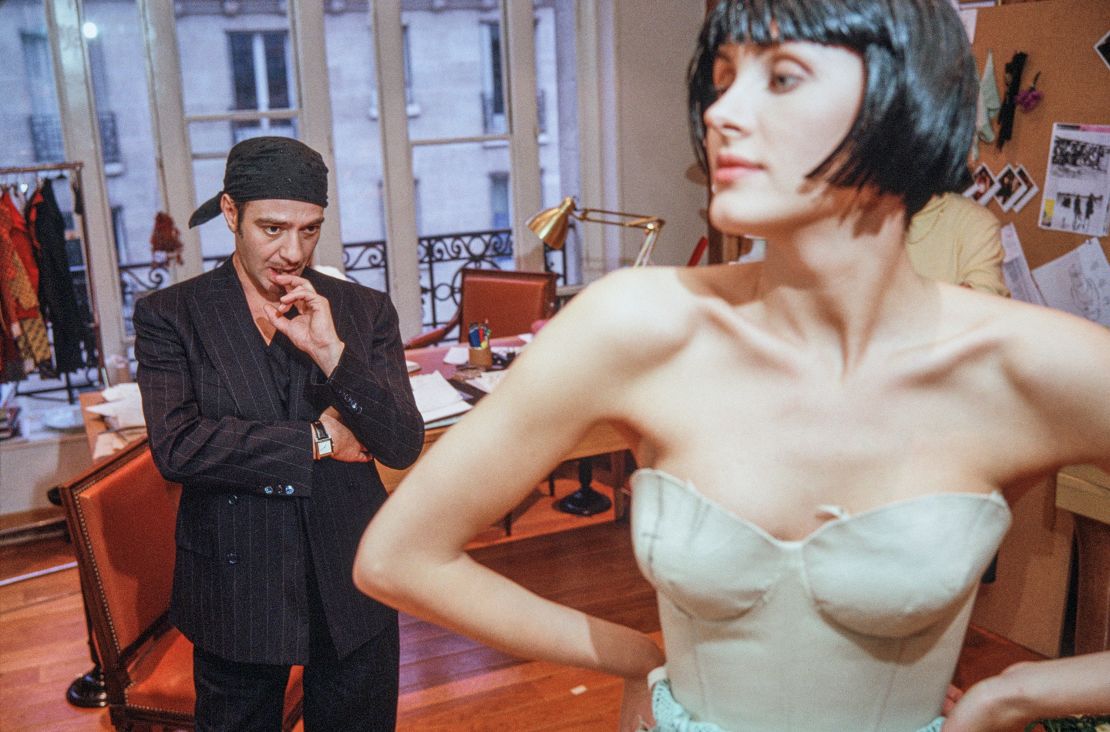
“There’s a madness to it,” Macdonald said of the incident, adding: “And you can see that at the end of that show, where he’s totally drunk and he’s being allowed to give an interview in his office. He’s devastated because his father’s dead, but he’s conflicted because he didn’t think he liked his father. He keeps going about how grateful he is to Mr. Toledano for sending a jet… And you’re thinking, ‘It doesn’t actually sound that great that you didn’t have time off.’ But I would say that if you’d asked John then, he would say, ‘I don’t want time off. I want to keep working.’”
That work is on full display throughout “High & Low” — the Victorian princesses, the roving gypsies and the “Eskimo and Mongolian hotties,” as Galliano described them in the stage notes for his Fall-Winter 2002 show “Esquimaux.” Perhaps no other fashion documentary has used archival footage so fittingly to illustrate the madcap genius of a figure whom fashion critic Tim Blanks once referred to as “the Cecil B. DeMille of fashion.”
Creative efforts
Returning to a place of trust and acceptance in the fashion industry required Galliano to take a pilgrimage of penance. As part of his years-long quest for reconciliation, the designer met with Jewish people — including a rabbi and a holocaust survivor — who could help him understand the gravity of his offensive comments.
Galliano hoped that, through this atonement, he would be given a second chance — and he was. Still, Macdonald would like his audience to remember that his outbursts had direct victims, one of whom he interviews in the film and who decidedly does not forgive Galliano. (“That was shocking and surprising to me — that the real victim of this actually has been forgotten,” the filmmaker said.) But he offers, without judgment, all one needs to come to their own conclusion about this public figure and his very public failings.
It was Kate Moss who first brought Galliano back into the fashion fold, asking him to design a wedding dress for her 2011 marriage to Jamie Hince. His first official post-Dior position was as designer-in-residence at Oscar de la Renta in 2013; he was installed as creative director at Maison Margiela the following year. His collections received some attention, though the sartorial theatrics he was known for were tamped down to match the house’s avant-garde approach.
It wasn’t until Galliano’s recent Spring-Summer 2024 Haute Couture collection for Margiela that he made a cultural impact equivalent to that of his halcyon days, reviving the iconic Brassaï doll aesthetic he previously presented at Dior’s Fall-Winter show in 2007. Men and women were cinched at the waist, teetering on heels, bursting with padding and furnished with chest plates; faces were glazed over by makeup artist Pat McGrath to create a porcelain finish.
“I want to take all the credit, of course,” Macdonald said jokingly of the collection, Galliano’s first since filming wrapped.
Before one of Galliano’s regular interviews for the film, Macdonald showed the designer a series of clips from his previous fashion shows “He started to shake, uncomfortable and nervous, smoking… He said, ‘It takes me back to the feeling of obsession that I was in the grip of then, which connects to the addiction. It connects to the excess and the bad behavior,’” the director recalled. “There was something really tragic about it. We’re looking at it going, ‘Wow, that’s crazy. It’s beautiful.’ And he’s looking at it, and it’s actually making him feel sick.”
“I think there was something cathartic about making the film — talking about all of this in great detail, knowing that it was going to be in public, watching the interviews that I did with other people — that has allowed him to move on from it in a way that maybe he hadn’t before,” Macdonald said of Galliano, who has not commented publicly on the film. “But you’d have to ask him.”
